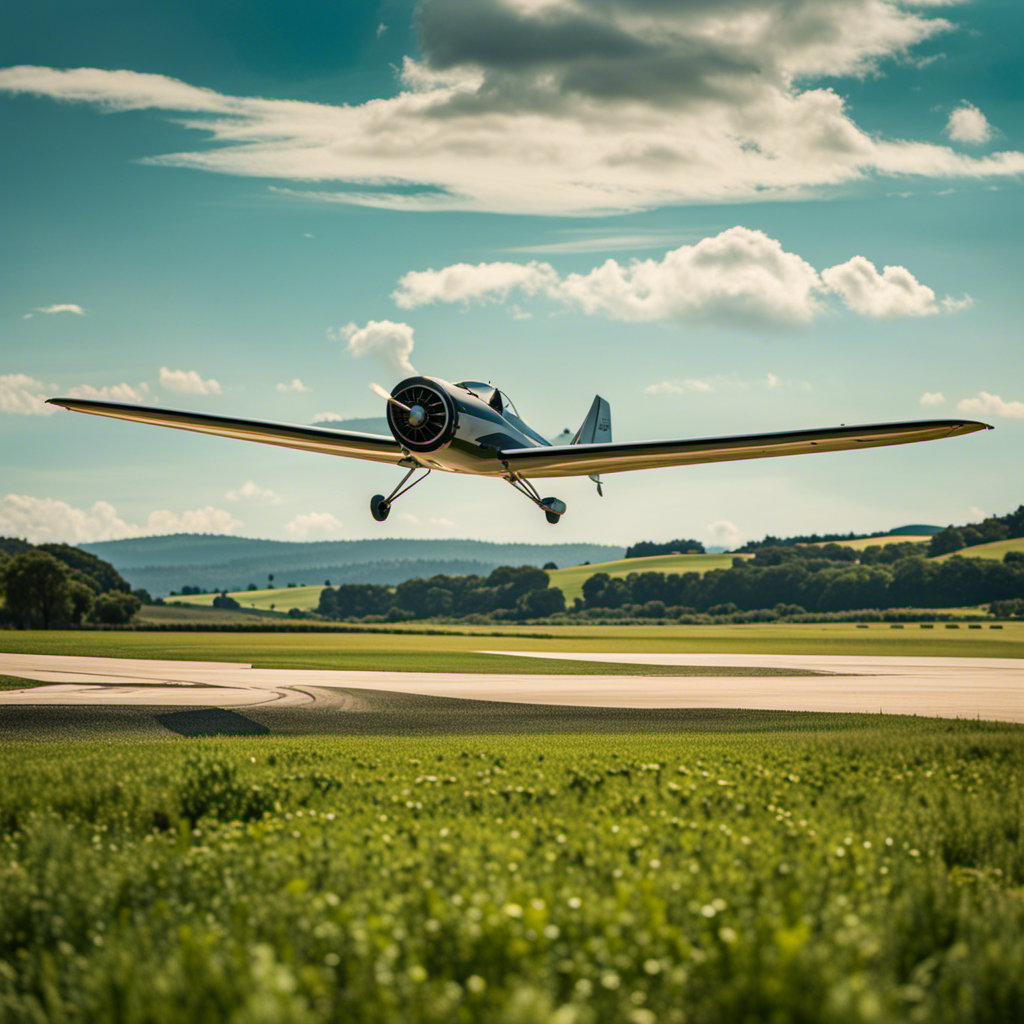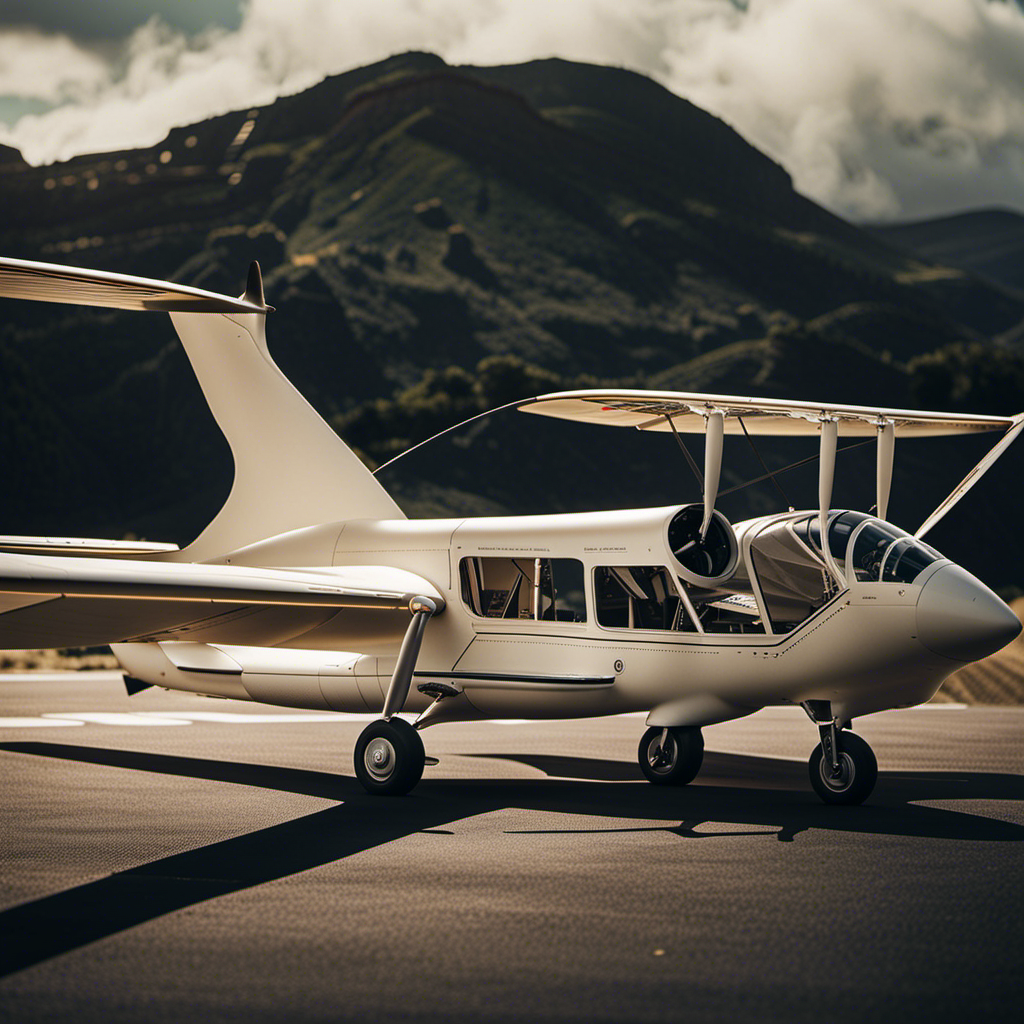Have you ever looked up at the sky and wondered what it would be like to soar through the clouds, feeling the wind on your skin and a feeling of freedom inside? Gliding, the art of flying without a motor, offers this exhilarating experience.
But before you embark on this adventure, it’s essential to consider the financial aspect. Is gliding an expensive hobby? In this article, we will delve into the costs associated with gliding, providing objective insights and data to help you make an informed decision.
Key Takeaways
- Gliding can be an expensive hobby due to various costs such as equipment, training, membership fees, maintenance, and transportation expenses.
- There are cost-saving strategies available, including scholarships, budget-friendly training options, and tips for saving on competition entry fees, travel, and accommodation.
- Financing and payment options, such as installment plans, personal loans, sponsorship programs, and crowdfunding campaigns, can help make gliding more affordable.
- Buying used gliders can be beneficial, but it’s important to consider the risks, find reputable sellers, and conduct pre-purchase inspections.
Equipment and Training Costs
Gliding can be a bit costly when you consider the equipment and training expenses. However, there are options available to make it more budget-friendly.
For those seeking financial assistance, gliding scholarships are a great opportunity. Many organizations offer these scholarships to individuals who demonstrate a passion for gliding but may not have the means to cover the costs.
Additionally, there are budget-friendly training options available. Some gliding clubs offer discounted rates for training sessions, allowing individuals to learn the sport without breaking the bank.
By taking advantage of these opportunities, aspiring gliders can minimize their expenses while still pursuing their passion.
Moving on to membership fees and club dues, they also play a significant role in the overall cost of gliding.
Membership Fees and Club Dues
Joining a gliding club can be an exciting opportunity for individuals interested in pursuing the sport. However, it’s important to consider the financial aspect of membership fees. Annual membership fees can vary depending on the club, with factors such as location, facilities, and services offered influencing the cost.
Joining a gliding club
Before making a decision, it’s important to consider the benefits and costs of joining a gliding club. When it comes to gliding, there are two main expenses to consider: the cost of lessons and the glider rental fees. Let’s take a closer look at these costs in the table below:
| Cost Item | Average Price |
|---|---|
| Lessons | $200 per hour |
| Glider Rental | $100 per hour |
As shown in the table, the cost of lessons and glider rental fees can add up quickly. However, joining a gliding club often comes with discounts and benefits that can offset these costs. For example, many clubs offer reduced rates for members, which can significantly reduce the cost of lessons and glider rentals. Additionally, being part of a club provides access to a supportive community and valuable resources. This transition into the next section, about annual membership fees, will further explore the financial aspects of gliding as a hobby.
Annual membership fees
To fully participate in the gliding club, you’ll need to pay annual membership fees. These fees cover various expenses, such as facility maintenance, insurance, and administrative costs. The amount of the membership fee can vary depending on the club and its amenities. On average, annual membership fees for gliding clubs range from $500 to $1500.
However, there are some cost-saving tips that can help reduce this expense. For instance, some clubs offer discounted rates for students or young adults. Additionally, volunteering at the club or taking on leadership roles may also lead to reduced membership fees. By taking advantage of these opportunities, gliding enthusiasts can enjoy the benefits of a gliding club while minimizing the financial burden.
Moving on to maintenance and repair costs…
Maintenance and Repair Costs
Gliding can be enjoyable, but it’s important to consider the maintenance and repair costs. When it comes to maintaining a glider, there are several expenses to keep in mind:
-
Regular inspections: Gliders require regular inspections to ensure they are airworthy and safe to fly. These inspections can come with a price tag, depending on the complexity of the aircraft and the expertise required.
-
Maintenance costs: Over time, components of the glider may wear out or require replacement. From the control surfaces to the landing gear, maintaining these parts can add up in terms of cost.
-
Repair expenses: Accidents happen, and when they do, repairing a glider can be costly. Whether it’s a minor repair or a major overhaul, repairs can quickly eat into your budget.
Considering these maintenance costs and repair expenses, it’s essential to have proper insurance coverage to protect yourself financially.
Transitioning into the next section, let’s explore the importance of insurance coverage in the context of gliding.
Insurance Coverage
When it comes to insurance coverage for pilots, liability insurance is a crucial aspect to consider. This type of insurance provides protection in the event of accidents or injuries caused by the pilot while operating the glider.
In addition to liability insurance, it is also important to have insurance coverage for glider damage or loss, as these aircraft can be quite expensive to repair or replace.
Liability insurance for pilots
Liability insurance is a must-have for pilots in order to protect themselves and cover any potential accidents or damages. It provides the necessary coverage for any bodily injury or property damage caused by the pilot while operating an aircraft. When it comes to liability coverage, insurance premiums can vary based on several factors such as the pilot’s experience, the type of aircraft being flown, and the coverage limits chosen. To give you an idea, here’s a table showcasing average liability insurance premiums for different types of aircraft:
| Aircraft Type | Average Premium |
|---|---|
| Single-Engine | $600 – $2,000 |
| Multi-Engine | $2,000 – $5,000 |
| Turboprop | $5,000 – $10,000 |
| Jet | $10,000+ |
As you can see, the premiums increase with the complexity and value of the aircraft. Now, let’s move on to discussing insurance for glider damage or loss, which is another important aspect to consider when engaging in gliding as a hobby.
Insurance for glider damage or loss
If you’re considering insuring your glider, it’s important to understand the coverage options available and the potential costs involved. Insurance coverage for glider damage or loss can vary based on factors such as the value of the glider, the pilot’s experience, and the location where it will be stored. Here are some key points to consider:
- Comprehensive coverage: This type of insurance provides protection against damage caused by accidents, fire, theft, and natural disasters.
- Liability insurance: It covers the costs if you cause damage to someone else’s property or injure another person while flying your glider.
- Deductibles: These are the out-of-pocket expenses you must pay before your insurance coverage kicks in.
- Premiums: The amount you pay for insurance coverage, which is typically based on the value of your glider and the level of coverage you choose.
- Coverage limits: Make sure your policy offers adequate coverage for the value of your glider and any potential liabilities.
Having the right insurance coverage can provide peace of mind and protect you from financial losses in case of accidents or damage.
Now let’s explore the transportation expenses associated with gliding.
Transportation Expenses
Getting to the gliding club can be costly due to transportation expenses. When considering the overall cost of gliding as a hobby, it’s important to take into account not just the initial investment in equipment and insurance, but also the ongoing expenses. Two significant factors to consider are the cost of maintenance and fuel expenses. Maintaining a glider can be quite expensive, with regular inspections and repairs adding up over time. Additionally, fuel expenses can quickly accumulate, especially during longer flights. To give a better understanding of the potential costs involved, the table below outlines the average annual expenses for maintaining a glider:
| Expense | Average Cost |
|---|---|
| Maintenance | $2,500 |
| Fuel | $1,200 |
| Total | $3,700 |
These figures are just estimates and can vary depending on the specific glider and individual circumstances. However, they provide a useful starting point when considering the financial commitment of gliding. In addition to these ongoing expenses, there are also additional costs for competitions and events, which will be discussed in the next section.
Additional Costs for Competitions and Events
When it comes to participating in gliding competitions and events, there are a few additional costs to consider.
Firstly, there are entry fees for competitions, which can range from a few hundred to several thousand dollars depending on the level of the event.
Secondly, there are travel and accommodation expenses. Competitions and events are often held in different locations that may require airfare or long drives. Additionally, hotel accommodations for the duration of the event are necessary.
These additional costs can significantly impact the overall expenses of engaging in gliding as a hobby. It is important to factor them in when considering the financial aspects of pursuing this activity.
Entry fees for competitions
You should be aware that entry fees for competitions can be quite costly in the gliding community. Here are some cost-saving strategies to consider:
-
Research and choose competitions wisely: Look for events that offer lower entry fees or discounted rates for certain categories or age groups.
-
Join a gliding club: Many clubs offer member discounts for competitions, which can significantly reduce the entry fees.
-
Share expenses with fellow gliders: Consider carpooling or sharing accommodations with other participants to split the costs.
-
Plan ahead and budget: Set aside a portion of your gliding budget specifically for competition entry fees to avoid any financial surprises.
By implementing these strategies, you can mitigate the financial impact of entry fees and make the most of your gliding experience.
Speaking of expenses, another significant aspect to consider is the travel and accommodation expenses for events.
Travel and accommodation expenses for events
To save money on travel and accommodations for events, it’s helpful to book in advance and look for deals.
When it comes to travel accommodations, expenses can add up quickly and eat into your budget. However, with careful planning and research, you can find ways to minimize these costs.
Booking your accommodations well in advance can often result in significant savings, as prices tend to rise closer to the event date. Additionally, be sure to check for any special deals or discounts that may be available. Many hotels offer promotional rates or packages for event attendees.
By taking advantage of these opportunities, you can reduce your overall expenses and have more money to allocate towards other aspects of the event.
Now, let’s explore some cost-saving tips and strategies for making your gliding hobby more affordable.
Cost-Saving Tips and Strategies
There’s plenty of ways to save money while enjoying the hobby of gliding. Cost-saving strategies and budget-friendly options can help make this exciting activity more affordable.
One effective strategy is to join a gliding club or association. These organizations often offer discounted rates for their members, as well as access to shared equipment and facilities.
Another option is to look for used gliders or equipment. Many experienced gliders sell their gear at a fraction of the original cost, providing an affordable entry point for beginners.
Additionally, taking advantage of off-peak times or booking in advance can often lead to lower prices for gliding experiences.
By utilizing these cost-saving strategies and exploring budget-friendly options, gliding can be a thrilling and affordable hobby.
As we transition into the subsequent section about financing and payment options, it’s important to consider the various ways to manage the financial aspects of gliding.
Financing and Payment Options
When it comes to financing your gliding adventures, exploring different payment options can help make the experience more accessible. Here are four financing options and payment plans to consider:
-
Installment plans: Many gliding clubs offer installment plans, allowing you to spread out the cost of membership fees, training, and equipment over several months or years.
-
Personal loans: If you prefer to finance your gliding activities independently, you can look into personal loans from banks or credit unions. These loans can provide you with the necessary funds upfront, which you can then pay back in installments.
-
Sponsorship programs: Some gliding clubs have sponsorship programs that provide financial support to aspiring gliders. These programs often require certain commitments or obligations in return, such as volunteering or promoting the club.
-
Crowdfunding: With the rise of online crowdfunding platforms, you can create a campaign to raise funds for your gliding adventures. Friends, family, and even strangers who share your passion for gliding may contribute to help you achieve your goals.
Considering second-hand or used equipment can be an effective way to reduce the overall cost of gliding.
Considering Second-hand or Used Equipment
When considering purchasing a used glider, it’s important to weigh the benefits and risks involved.
On one hand, buying used can potentially save you a significant amount of money compared to buying new.
However, there are also risks involved, such as potential hidden damages or older technology that may not meet your specific needs.
Therefore, it is essential to find reputable sellers and conduct thorough inspections before making a purchase.
Benefits and risks of buying used gliders
If you’re considering buying a used glider, you should be aware of the benefits and risks involved. Here are four key points to consider:
-
Equipment Reliability: Used gliders may have undergone wear and tear, potentially impacting their reliability. It is crucial to thoroughly assess the condition, maintenance history, and any potential structural damage before making a purchase.
-
Resale Value: Buying a used glider can be a wise financial decision. Unlike a new glider, which depreciates significantly upon purchase, used gliders tend to hold their value better over time. This means that if you decide to sell it in the future, you may recoup a significant portion of your investment.
-
Cost Savings: Purchasing a used glider can offer substantial cost savings compared to buying new. This allows you to allocate more of your budget towards other aspects of the hobby, such as training or upgrading equipment.
-
Variety of Options: The used glider market offers a wide range of models, sizes, and features to choose from. This gives you the opportunity to find a glider that fits your specific needs and preferences at a potentially lower price point.
Considering these benefits, it is important to proceed with caution when purchasing a used glider. To ensure a successful transaction, finding reputable sellers and conducting thorough inspections is essential.
Finding reputable sellers and conducting inspections
To ensure a successful purchase, it’s crucial to thoroughly inspect the used glider and find a reputable seller. Reputation management plays a significant role in this process.
Before making any commitments, it is essential to research the seller’s reputation. Look for feedback from previous buyers and check if they have any negative reviews or complaints. This will give you an idea of their reliability and the quality of their gliders.
Additionally, conducting pre-purchase inspections is vital. Hire a professional to thoroughly examine the glider for any structural damages or potential issues. This will ensure that you are not investing in a faulty or unsafe glider.
By following these steps, you can minimize the risks and make an informed decision when purchasing a used glider.
Now, let’s explore sponsorship opportunities to further support your gliding endeavors.
Exploring Sponsorship Opportunities
Exploring sponsorship opportunities can help make gliding a more affordable hobby. There are several cost-saving strategies that can be utilized when seeking sponsorship for gliding:
-
Seek out local businesses: Local businesses are often willing to sponsor hobbies or activities that align with their brand values. Approach them with a well-prepared proposal highlighting the benefits of sponsoring gliding, such as exposure to a niche target audience.
-
Join gliding clubs: Many gliding clubs offer sponsorship programs for their members. These programs can provide financial assistance, discounted rates for equipment, or access to training resources. Joining a club can help you tap into these sponsorship opportunities.
-
Participate in competitions: Participating in gliding competitions can attract the attention of potential sponsors. Sponsors are more likely to support gliders who demonstrate skill and potential. Focus on improving your skills and achieving success in competitions to increase your chances of securing sponsorship.
Frequently Asked Questions
Are there any discounts available for membership fees and club dues?
Yes, there are discounted membership rates and affordable club packages available for gliding enthusiasts. These options help reduce the overall cost of the hobby and make it more accessible to a wider range of individuals.
How much does insurance coverage typically cost for gliding hobbies?
Insurance coverage cost for gliding hobbies can vary depending on factors like pilot experience, aircraft value, and coverage limits. For example, a novice pilot with a low-value glider may pay around $500 per year for insurance.
What are the average transportation expenses associated with gliding?
Transportation expenses for gliding can vary depending on distance and mode of travel. However, membership discounts offered by gliding clubs can help offset these costs. Data-driven analysis shows that with proper planning, transportation expenses can be managed effectively.
Are there any additional costs for participating in competitions and events?
Participating in gliding competitions and events can have significant cost implications. On average, gliders spend around $2,000 to $5,000 per competition, considering expenses like entry fees, travel, accommodation, and equipment maintenance. Financial considerations are crucial for competitive gliders.
What are some cost-saving tips and strategies for gliding enthusiasts?
Cost saving tips for gliding enthusiasts include joining a gliding club for discounted rates, sharing costs with other pilots for maintenance and storage, and purchasing used equipment or sharing equipment with other pilots.
Conclusion
In conclusion, while gliding can be a thrilling and exhilarating hobby, it is important to consider the financial aspects involved.
From equipment and training costs to membership fees and maintenance expenses, there are various financial commitments to be made. However, with careful planning and cost-saving strategies, pursuing this hobby can be more affordable.
Exploring second-hand equipment options and sponsorship opportunities can also help alleviate some of the financial burdens.
So, don’t let the potential costs deter you from experiencing the breathtaking freedom of gliding through the skies.
With a heart that soars as high as the skies, Aria, affectionately known as “Skylark,” is the driving force behind Soaring Skyways. Her journey into the gliding world began as a young dreamer gazing up at the soaring birds, yearning to experience the weightlessness and freedom they embodied. With years of experience both in the cockpit and behind the scenes, Aria’s commitment to the gliding community is unwavering.










